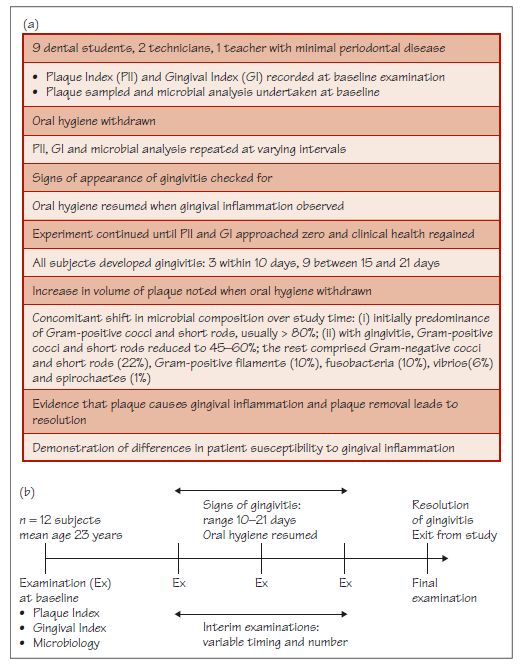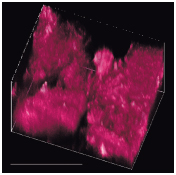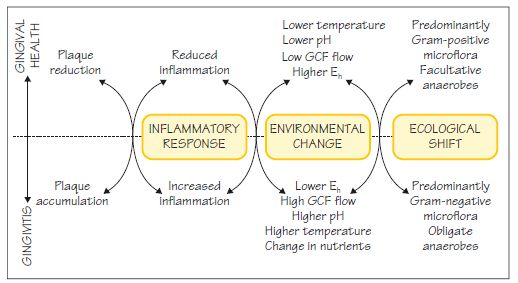4
Role of plaque in the aetiology of periodontal diseases
Figure 4.1 (a) Stages and (b) design of a classic study on experimental gingivitis in humans.

Figure 4.2 Non-specific, specific and ecological plaque hypotheses.

Figure 4.3 Climax microbial community in plaque biofilm showing the diverse range of microbial forms. Courtesy of Professor P. Marsh.

Figure 4.4 Noran Odyssey confocal laser scanning microscope image of an intact 1-week-old plaque biofilm formed in vivo using the Leeds in situ device. The image shows the three-dimensional structure and variations in plaque biofilm density: pink areas are biomasses of bacteria; dark areas are voids, channels or spaces. The image was achieved by volume rendering of a series of x–y (horizontal) sections. Scale bar = 50 µm. Courtesy of Dr S. Wood (Wood et al., 2002).

Figure 4.5 Schematic diagram of the ecological plaque hypothesis (Marsh 1991, 1994). GCF, gingival crevicular fluid.

Since the classic experimental gingivitis study in 1965 (Loë et al., 1965), the aetiological role of dental plaque as the key agent in gingivitis has been acknowledged (Fig. 4.1). Nowadays, plaque is considered a good example of a biofilm (Marsh, 2005) and there are three different but interrelated hypotheses of its role in the aetiology of periodontal dieases (Loesche, 1976, 1979; Theilade, 1986; Marsh, 1991, 1994) (Fig. 4.2).
Dental plaque has been defined as a diverse community of microorganisms found on the tooth surface as a biofilm, embedded in an extracellular matrix of polymers of host and microbial origin. Biofilms are defined as matrix-embedded microbial populations, adhering to each other and/or to surfaces or interfaces (Marsh, 2005). The production of extracellular polymers forms a functional matrix.
Table 4.1 Stages of plaque biofilm formation.
| Stage | Plaque biofilm formation |
| 1 Pellicle formation | Host and bacterial molecules, salivary glycoproteins, are adsorbed onto the tooth surface leading to acquired pellicle formation |
Stay updated, free dental videos. Join our Telegram channel

VIDEdental - Online dental courses


